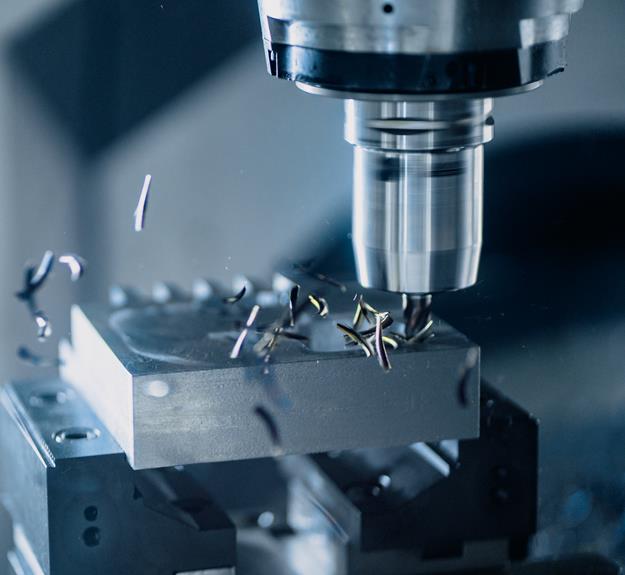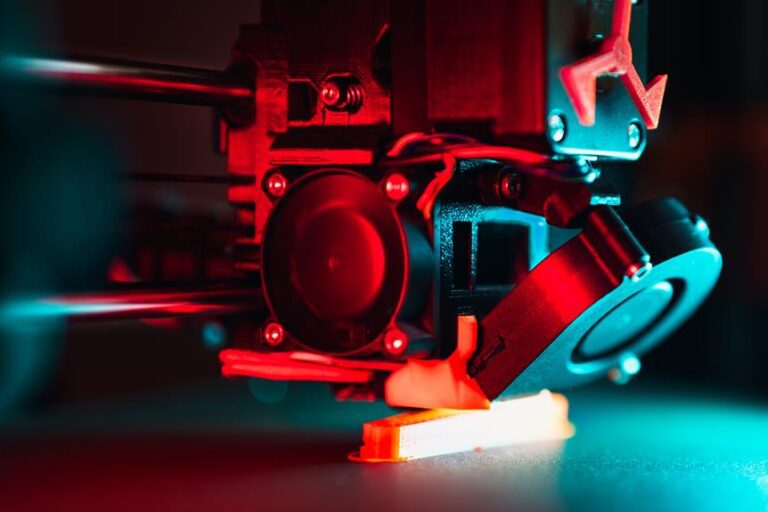DLP 3D Printers: Taking Precision and Speed to the Next Level
While traditional 3D printers have revolutionized manufacturing, some may argue that they lack precision and speed. However, DLP (Digital Light Processing) 3D printers are here to change that.
This article explores the technology behind DLP printers, highlighting their advantages in achieving unparalleled precision and speeding up the printing process.
Additionally, it delves into the various applications of DLP printing in different industries and discusses the future developments and innovations in this cutting-edge technology.
Get ready to witness the next level of precision and speed with DLP 3D printers.
Key Takeaways
- DLP 3D printers offer unparalleled precision and detail in creating highly precise and detailed objects.
- DLP technology allows for faster printing times compared to other methods, as each layer can be cured at once.
- DLP printers are well-suited for applications that require intricate designs, such as jewelry, dental models, and microfluidic devices.
- DLP technology revolutionizes manufacturing processes by combining speed and precision, enabling new possibilities in various industries.
The Technology Behind DLP 3D Printers
Exploring the technology behind DLP 3D printers, we delve into the intricate process of layer-by-layer photopolymerization. DLP, or Digital Light Processing, is a 3D printing technology that utilizes a digital projector to cure liquid resin layer by layer, resulting in the creation of highly precise and detailed objects.
DLP 3D printers offer a significant advantage in terms of precision. The use of a digital projector allows for the projection of an entire layer at once, leading to more accurate and consistent prints. This technology ensures that the dimensions and details of the final product are maintained with exceptional accuracy.
In addition to precision, DLP 3D printers also excel in speed. By projecting an entire layer at once, the printing process is significantly faster compared to other 3D printing technologies. This enables users to produce complex objects in a shorter amount of time, increasing productivity and efficiency.
The speed and precision of DLP 3D printers make them an ideal choice for a wide range of applications. From prototyping and product development to manufacturing and even dentistry, this technology offers the freedom to produce intricate and accurate objects in a timely manner.
Advantages of DLP Printing Technology
DLP printing technology offers numerous advantages, consistently delivering high precision and speed. Unlike other 3D printing methods, DLP printers use a liquid resin that is cured by a digital light source, resulting in highly accurate and detailed prints. The resin used in DLP printing allows for smoother surfaces and finer details compared to other printing technologies. This makes DLP printers well-suited for applications that require intricate designs, such as jewelry, dental models, and microfluidic devices.
Another advantage of DLP printing is its speed. The entire layer of the object is cured at once, allowing for faster printing times compared to other methods where each layer needs to be cured individually. This makes DLP printers a preferred choice for rapid prototyping and small-scale production.
Furthermore, DLP printers offer a wide range of materials to choose from, including flexible and biocompatible resins. This versatility allows for the creation of functional prototypes and end-use products in various industries.
Achieving Unparalleled Precision With DLP 3D Printers
With advancements in technology, the precision capabilities of DLP 3D printers have reached unprecedented levels. Digital Light Processing (DLP) is a technology that uses light and photosensitive resins to create highly detailed and accurate 3D prints. Here are three reasons why DLP 3D printers achieve unparalleled precision:
- High-resolution printing: DLP printers are equipped with high-resolution projectors that can produce pixel sizes as small as 25 microns. This means that every detail of the model is accurately represented, resulting in a smooth and precise finish.
- Layer uniformity: DLP printers use a layer-by-layer approach to build objects. Unlike other 3D printing technologies, DLP printers have consistent layer thickness throughout the entire print, ensuring uniformity and precision in every layer.
- Minimal distortion: DLP 3D printers use a vat of liquid resin that is cured by light. This curing process results in minimal distortion and shrinkage, allowing for highly accurate and dimensionally stable prints. The lack of distortion ensures that the final print is as close to the original design as possible.
With these advancements, DLP 3D printers have become a popular choice for industries that require high precision, such as jewelry making, dental applications, and prototyping. The unparalleled precision offered by DLP technology opens up a world of possibilities for creators and innovators, allowing them to bring their designs to life with utmost accuracy and detail.
Speeding up the Printing Process With DLP Technology
By utilizing innovative DLP technology, the printing process can be significantly expedited. DLP, or Digital Light Processing, is a 3D printing technology that uses a digital projector to cure photopolymer resin layer by layer, resulting in faster printing speeds compared to traditional methods. Unlike FDM printers that deposit melted plastic layer by layer, DLP printers can cure an entire layer at once, reducing the overall print time.
The speed advantage of DLP technology lies in its ability to expose the entire layer simultaneously, allowing for faster production rates. This makes DLP printers ideal for applications that require quick turnaround times, such as rapid prototyping or small-scale production.
Furthermore, DLP printers are capable of achieving high-resolution prints without sacrificing speed. The use of digital projectors enables precise control over the curing process, resulting in highly detailed and accurate prints. This combination of speed and precision makes DLP technology a compelling option for industries that demand both efficiency and quality.
As we delve into the applications of DLP 3D printing in various industries, it becomes evident how the speed and precision offered by this technology can revolutionize manufacturing processes and enable new possibilities in fields such as healthcare, automotive, aerospace, and more.
Applications of DLP 3D Printing in Various Industries
Exploring the diverse applications of DLP 3D printing reveals its potential to enhance manufacturing processes and unlock new opportunities in industries such as healthcare, automotive, aerospace, and more.
- Healthcare: DLP 3D printing plays a vital role in the medical field by enabling the creation of custom-made implants, prosthetics, and surgical tools. Its high precision and accuracy allow for the production of patient-specific models, which aid in preoperative planning and training.
- Automotive: The automotive industry benefits from DLP 3D printing by enabling the rapid prototyping of new designs and parts. This technology allows manufacturers to iterate quickly and efficiently, reducing development time and costs. Additionally, DLP 3D printing can be used for the production of lightweight and complex components, improving vehicle performance and fuel efficiency.
- Aerospace: DLP 3D printing is revolutionizing the aerospace industry by enabling the production of lightweight and high-strength parts. It allows for the creation of complex geometries that were previously impossible to manufacture, resulting in reduced weight and improved fuel efficiency. Furthermore, DLP 3D printing enables the rapid production of prototypes and tooling, streamlining the manufacturing process.
Key Factors to Consider for Successful DLP Printing
When it comes to successful DLP printing, two key factors that need to be carefully considered are material selection and post-processing techniques.
The choice of material is crucial as it directly affects the quality and durability of the printed object.
Additionally, the post-processing techniques employed can greatly impact the final appearance and functionality of the printed product.
Material Selection Importance
The selection of materials is of utmost importance for achieving successful DLP printing results. When choosing materials for DLP printing, there are several key factors to consider:
- Photopolymer Resin Compatibility: DLP printers use photopolymer resin, which cures when exposed to light. It is crucial to choose a resin that is compatible with the DLP printer's wavelength and intensity. Using the wrong resin can lead to failed prints and wasted time and resources.
- Material Properties: Different projects require different material properties, such as flexibility, hardness, or heat resistance. Consider the specific properties needed for your project and select a resin that can meet those requirements.
- Quality and Reliability: Ensure that the resin you choose is of high quality and has a proven track record of reliability. Look for reputable manufacturers and read customer reviews to ensure you are getting a reliable material.
Post-Processing Techniques Impact
Post-processing techniques play a crucial role in achieving successful DLP printing outcomes. These techniques refer to the steps taken after the completion of the 3D printing process to enhance the final product's appearance and functionality.
One key factor to consider is the removal of support structures, which are necessary during printing to prevent the collapse of overhanging features. Post-processing involves carefully removing these supports without damaging the printed part.
Another important consideration is surface finishing, which involves smoothing and polishing the printed object to achieve a desired aesthetic appearance. This can be done through sanding, painting, or applying a protective coating.
Additionally, post-processing techniques may also include post-curing, where the printed object is exposed to UV light to further strengthen the material and improve its properties.
Exploring the Materials Compatible With DLP Printers
One of the key advantages of DLP printers is their ability to utilize a wide range of compatible materials. This versatility allows users to create various types of objects, from prototypes to finished products.
Here are three materials commonly used with DLP printers:
- Resins: DLP printers are particularly well-suited for printing with resin materials. Resins offer high levels of detail and accuracy, making them ideal for creating intricate models and prototypes. They come in different types, such as standard resins, flexible resins, and castable resins, each with its own unique properties and applications.
- Photopolymers: Photopolymers are another popular material used in DLP printing. These liquid polymers solidify when exposed to light, allowing for rapid printing speeds and precise details. Photopolymers are available in a wide range of colors and can be used for various applications, including jewelry, dental models, and architectural models.
- Biocompatible Materials: DLP printers are also capable of printing with biocompatible materials, making them suitable for medical and dental applications. Biocompatible resins are used to create custom dental implants, surgical guides, and orthodontic models. These materials are safe for use in the human body and meet the necessary regulatory standards.
Fine-Tuning the Resolution for High-Quality DLP Prints
To achieve high-quality DLP prints, it is essential to fine-tune the resolution by adjusting the pixel size and layer thickness. Digital Light Processing (DLP) 3D printers use a projector to cure liquid resin layer by layer, resulting in highly detailed and accurate prints. The resolution of these prints is determined by the size of the individual pixels and the thickness of each layer.
Pixel size refers to the smallest unit of measurement that can be displayed by the projector. Smaller pixels allow for finer details and higher resolution prints. However, reducing the pixel size may also increase the printing time, as more pixels need to be cured for each layer.
Layer thickness is another crucial factor in achieving high-quality DLP prints. Thinner layers result in smoother surfaces and more intricate details. However, thinner layers may also require more print layers, leading to longer printing times.
Finding the right balance between pixel size and layer thickness is crucial for achieving high-quality DLP prints. It may require some experimentation and adjustment to determine the optimal settings for each specific print.
Maintaining and Troubleshooting DLP 3D Printers
Maintaining and troubleshooting DLP 3D printers is crucial for ensuring optimal print quality. Print quality issues may arise due to factors such as improper resin curing, resin contamination, or misaligned components.
Regular maintenance of the resin tank, including cleaning and replacing the PDMS layer, is essential to prevent print failures.
Troubleshooting common errors, such as layer shifting or failed prints, involves identifying potential causes like motor issues, software glitches, or incorrect slicing settings.
Print Quality Issues
When dealing with print quality issues, it is essential to be aware of and address potential problems within DLP 3D printers. Here are three common print quality issues and how to troubleshoot them:
- Layer Shift: If the layers of your print are misaligned or shifted, it could be due to a loose belt or a problem with the motor. Check and tighten all belts, and ensure that the motor is functioning properly.
- Warping: Warping occurs when the corners or edges of your print lift or curl. To prevent warping, ensure that your print bed is level and clean. You can also use a heated bed or apply a layer of adhesive to improve adhesion.
- Surface Imperfections: If your print has rough surfaces, blobs, or stringing, it could be caused by incorrect printing temperature or incorrect retraction settings. Adjust the temperature and retraction settings to achieve better surface quality.
Resin Tank Maintenance
Regular maintenance of the resin tank is crucial for ensuring optimal performance and longevity of DLP 3D printers. Resin tanks should be cleaned regularly to remove any debris or cured resin that may affect the printing process. It is recommended to inspect the tank for any signs of damage, such as cracks or cloudiness, as these can impact print quality. Additionally, the resin level should be monitored and replenished as needed to prevent interruptions during printing.
Proper storage of the resin tank when not in use is also important to prevent contamination or damage. By following these maintenance practices, users can maximize the lifespan of their resin tanks and ensure consistent and high-quality prints.
Transitioning into the next section, let's now explore some common errors that users may encounter while operating DLP 3D printers.
Troubleshooting Common Errors
To address common errors and ensure smooth operation, it is important for users to understand how to maintain and troubleshoot DLP 3D printers. Here are three common errors that users may encounter and how to troubleshoot them:
- Layer Shift: If you notice that the layers of your print are not aligning correctly, it could be due to a loose belt or a mechanical issue. Check the belt tension and tighten it if necessary. Also, make sure that the build platform is securely attached and properly calibrated.
- Failed Prints: If your prints are consistently failing, it could be due to incorrect exposure settings or improper resin levels. Check the exposure settings in your slicing software and adjust them accordingly. Additionally, ensure that the resin tank is filled to the recommended level and free from debris.
- Resin Leakage: If you find resin leaking from your printer, it could be due to a loose or damaged seal. Inspect the seals and replace any that are worn or damaged. Also, make sure that the resin tank is properly seated and securely attached.
By understanding how to troubleshoot these common errors, users can maintain the functionality and performance of their DLP 3D printers.
In the next section, we will explore future developments and innovations in DLP printing technology.
Future Developments and Innovations in DLP Printing Technology
One potential development in DLP printing technology is the integration of artificial intelligence algorithms to enhance printing efficiency and accuracy. Artificial intelligence (AI) has the potential to revolutionize the world of DLP printing by automating and optimizing various aspects of the printing process. By analyzing data and making real-time adjustments, AI algorithms can help minimize errors and improve print quality.
AI algorithms can be used to analyze the geometry and complexity of a 3D model and automatically optimize the printing parameters. This can result in faster printing speeds and improved accuracy. AI can also assist in identifying potential issues, such as overhangs or unsupported structures, and suggest modifications to ensure successful printing.
Another area where AI can make a significant impact is in the optimization of support structures. Support structures are necessary in DLP printing to provide stability during the printing process. However, they can be time-consuming to design and remove after printing. AI algorithms can analyze the geometry of a 3D model and generate support structures that are efficient and easy to remove, reducing material waste and post-processing time.
Furthermore, AI can enhance the predictive maintenance of DLP printers. By analyzing data from various sensors within the printer, AI algorithms can detect potential issues before they cause a breakdown. This proactive approach can minimize downtime and ensure optimal performance.
Frequently Asked Questions
How Much Does a DLP 3D Printer Cost?
The cost of a DLP 3D printer can vary depending on factors such as the brand, features, and build size. Prices can range from a few hundred dollars for entry-level models to several thousand dollars for high-end professional machines.
What Is the Maximum Size of Objects That Can Be Printed With a DLP 3D Printer?
The maximum size of objects that can be printed with a DLP 3D printer depends on the specific model and its build volume. Generally, DLP printers offer a range of sizes from small, intricate designs to larger objects with dimensions up to several feet.
Are DLP Prints as Durable as Prints From Other 3D Printing Technologies?
DLP prints can be as durable as prints from other 3D printing technologies. Factors such as material choice, design, and post-processing techniques can all influence the durability of the final print.
Can DLP Printers Use Different Types of Resins or Only Specific Ones?
DLP printers are capable of using a variety of resins, including both standard and specialty types. This flexibility allows for customization and experimentation with different materials to achieve specific characteristics and desired outcomes in the final printed objects.
What Are Some Common Issues or Problems That Can Occur When Using a DLP 3D Printer, and How Can They Be Resolved?
Some common issues that can occur when using a DLP 3D printer include failed prints, layer shifting, and resin leakage. These issues can be resolved by ensuring proper calibration, maintaining a clean environment, and using high-quality resins.
Conclusion
In conclusion, DLP 3D printers demonstrate remarkable precision and speed, revolutionizing the printing industry.
The advanced technology behind these printers allows for unparalleled accuracy, while their fast printing process increases efficiency.
DLP printing finds applications in various industries, offering a wide range of possibilities.
With compatibility for various materials and the ability to fine-tune resolution, DLP printers produce high-quality prints.
As the technology continues to evolve, we can anticipate exciting future developments and innovations in DLP printing.









